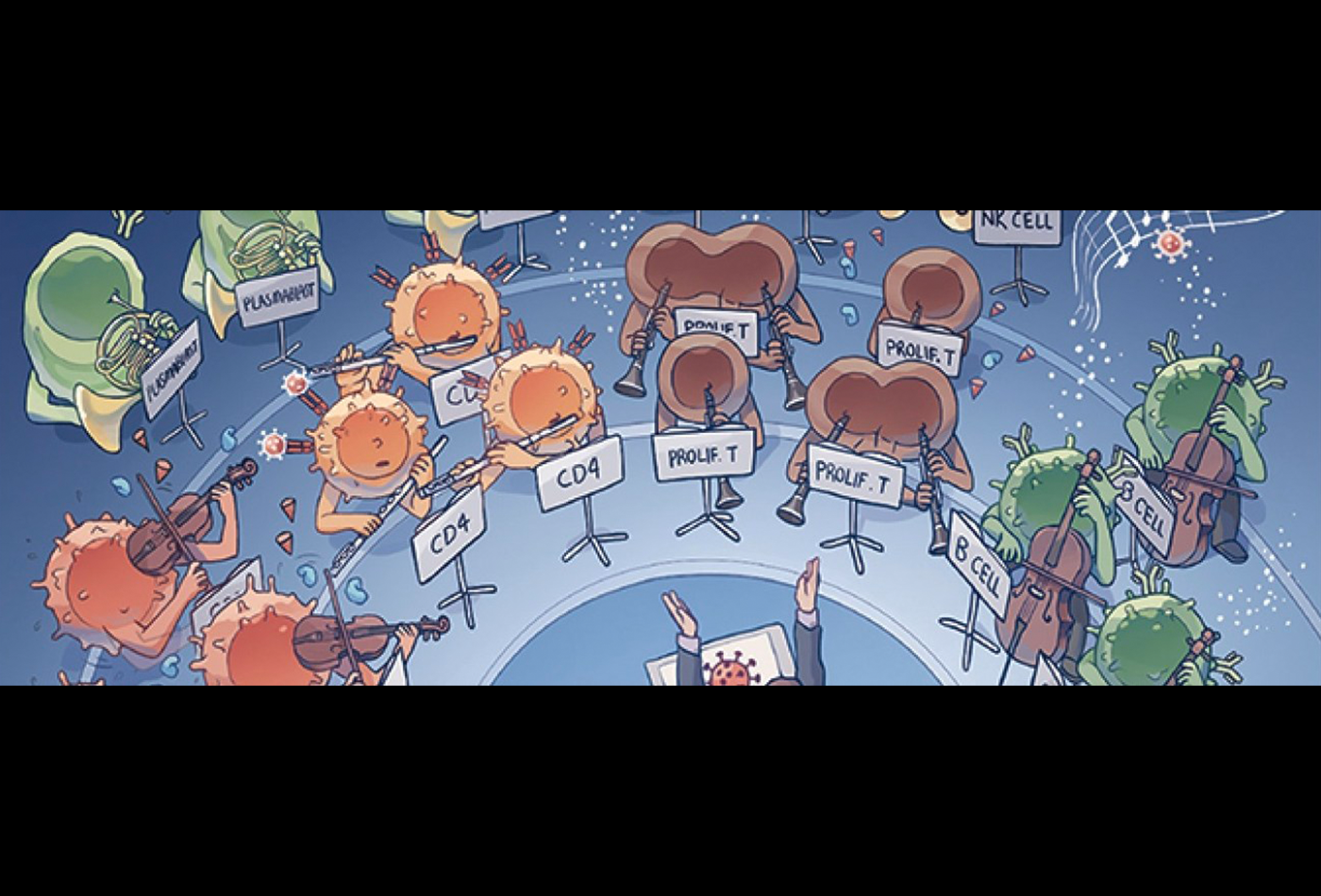Understanding The Score: A Dynamic Interrogation Of Acute HIV Infection
Professor Alex Shalek's recent work has been highlighted in an article by the Ragon Institute of MGH, MIT, and Harvard.
Alex Shalek, Pfizer-Laubach Career Development Associate Professor and Ragon associate member, has a new study published today in Nature Medicine, Integrated Single-Cell Analysis of Multicellular Immune Dynamics during Hyper-Acute HIV-1 Infection. This study uses single-cell RNA sequencing to understand immune system dynamics after acute HIV infection, with samples provided from the FRESH (Females Rising through Education, Support, and Health) study in South Africa, which is run by Ragon member Krista Dong. Graduate student Sam Kazer sequenced and analyzed over 59,000 cells from four patients with HIV who provided frequent clinical samples from a non-infected state, through acute infection, and up to two years, nine months post-infection without treatment. These samples, acquired before South Africa’s standard of care included antiretroviral therapy (ART) starting at HIV diagnosis, represent a unique opportunity to closely examine the immune system’s response to acute HIV infection.
Using a single-cell approach, with samples taken over a long period of time, the Shalek lab was able to identify transient transcriptional changes that, taken together, drive the immune system’s dynamic and changing response to acute HIV infection over more than two years. Essentially, they have examined the immune response as if it is a symphony; each cell is an instrument and they are all playing together, sometimes in harmony with each other and sometimes not, briefly or for an entire movement, to create the larger immune response. Hearing the symphony is relatively easy; hearing each individual note of each cell is often much more difficult.
To do this, the lab developed a new framework that would allow for the interrogation of immune response at a single-cell level. This provides in-depth insight into the body’s response to acute HIV infection, by looking at dynamic cellular responses, individually and working together, over time. If you will, they are breaking down each moment of the symphony into the individual instruments and the notes being played to determine how the instruments – here, the cells – work together to create the larger immune response. Like a symphony, some moments are incredibly transient and may be harder to distinguish, yet imperative to the whole. This framework allowed the Shalek lab to dissect the response to the level of each individual cell’s part. Using single-cell RNA sequencing over time, they can see the role each cell needs to play and how, or if, it interacts (harmonizes) with other cells – the dynamics of the immune response to acute HIV infection.
The results suggest new roles for immune cells in acute infection, including natural killer cells, monocytes, and CD4+ T cells, as well as the identifying genetic changes that drove the immune system’s response “programs” identified across multiple patients. Additionally, two of the patients were potential controllers, whose HIV infections did not progress for the duration of the study, despite the fact that they were not on ART. In these patients, a subset of proliferative, cytotoxic natural killer cells was identified in the earliest stages of acute infection, suggesting that the very first response to infection may influence the immune system’s ability to control HIV long-term.
Ultimately, this work provides an important, unique reference set for the immune response to acute HIV. The new framework developed goes beyond HIV, however; it could be used to interrogate the dynamics of the immune response to both bacterial and viral infections and may be of use in non-infectious diseases like cancer or autoimmune disorders.





